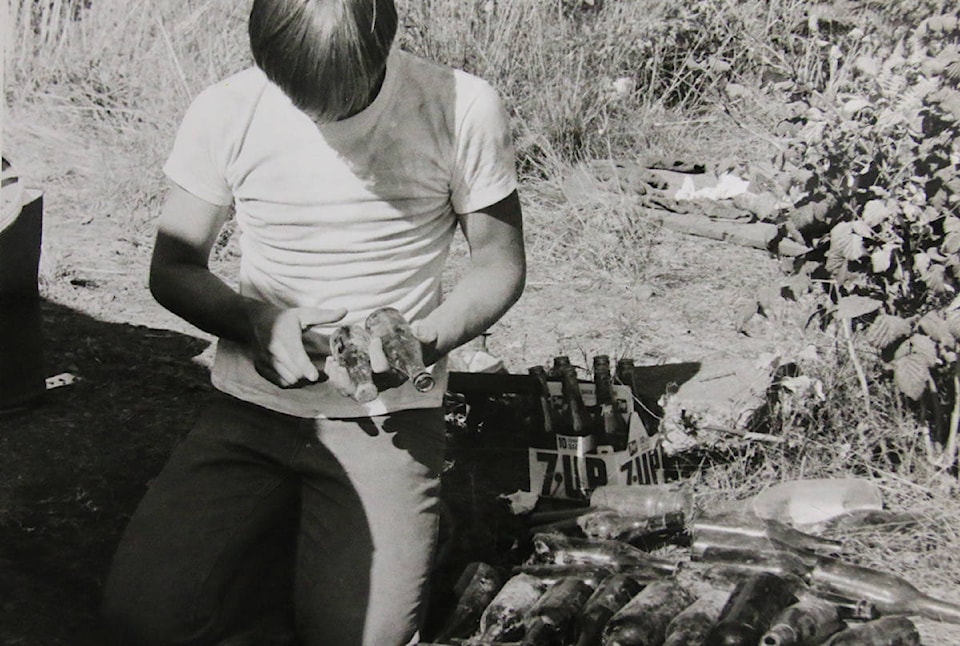I and my friends did our bit to ransack Cumberland’s cultural legacy of the Chinese coal miners, too; but at least our bottles didn’t travel far.
Even a so-called historian such as myself learns something new (OK, old) every day.
I hadn’t realized until the recent news stories concerning the centennial of the Halifax explosion that at least two good things came out of that disastrous and greatest non-nuclear explosion in Canadian history.
The result of hundreds of men, women and children, military personnel and civilians, having been blinded by flying glass played a crucial role in the founding of the Canadian National Institute for the Blind. Too, the disaster, according to The Canadian Press, “marked a major turning point for the Canadian Red Cross, which until then had no significant experience with major civic disasters”.
Another timely and poignant article appeared days before the 76th anniversary of the bombing of Pearl Harbour. This referred to the fact that the remains of 100 sailors and marines who were killed when the USS Oklahoma capsized have finally been identified by their DNA.
Because as many as 400 of them had been interred in a Hawaiian cemetery without full identification being possible at the time, the Defence POW/MIA (Prisoners of War/Missing in Action) Accounting Agency undertook to exhume the bodies so as to apply advances in forensic science and genealogical help from family members.
Obviously, the job isn’t done yet; hopefully, it will be continued. It’s long been known that, even decades later, families and descendants want the sense of closure that comes from formal identification and, with it, confirmation of how, where and when their loved ones died.
Also on a positive, albeit tentative, note is this update from the heritage front. Recently, I told you about a mature oak tree that was threatened by a luxury condo development in Oak Bay. Ironically, it sits on an adjoining lot, not the property slated for development, but construction would have proved fatal to its encroaching root system. Well, Oak Bay council turned down the rezoning bid on the grounds that, as paraphrased by the Times-Colonist, “high-end condominiums don’t serve [the] community’s needs right now”.
So the oak tree, one of what’s recognized to be an endangered species, need I remind you, has been reprieved. Until the next and amended rezoning request, anyway.
I had to chuckle at the story about UVic students examining “unearthed history” from Victoria construction sites. Thirty-five anthropology students were allowed to “handle” artifacts such as bottles and Chinese crockery recovered from three sites which were used for a one-day exhibit at the Royal B.C. Musuem in November.
What was considered noteworthy was the fact that, for that day, students were allowed to “be up close and personal with them,” according to archaeology professor Katherine Cook. In other words, the artifacts weren’t behind glass as is usually the case.
RBC anthropological collections manager Genevieve Hill pointed out that the bottles and ceramics were a window to the living styles of Chinese labourers and craftsmen who, she says, are “under-represented in early Victoria’s historical records”.
Why this made me smile is my memory from way back in the ’60s when bottle diggers from across Canada and the U.S. descended on Cumberland’s Chinatown. Tens of thousands of bottles — probably more — mostly hand-blown and many of them beautifully embossed and coloured, were turned up by young and old, some of whom camped there for their vacations. The Americans, some from as far as Vermont according one licence plate that I recall, hauled them home by the carload.
I and my friends did our bit to ransack this cultural legacy of the Chinese coal miners, too; but at least our bottles didn’t travel far. In fact, I still have most of mine.
Why did the news report of the short-lived RBC exhibit amuse me? Because, in those heady days of digging for bottles at Cumberland — it really was a mini-gold rush — when I saw those bottles leaving the country, I approached two staff members I knew at the provincial museum. I suggested that they accompany me to Cumberland for a weekend’s dig, any treasures they found to go to the museum as part of our provincial heritage.
I remember their shocked response: Drive all the way to Cumberland to dig for bottles in the reclaimed swamp that, for 70 years had been Chinatown? On a weekend (i.e. their own time)? On their own gas? Get real, Tom!
So it didn’t happen. And I was damned if I was going to donate the results of my hard work (you sometimes had to dig down almost eight feet in what had become hard-packed ash and clay), and in semi-tropical heat, to hit paydirt.
I guess university students “handling” bottles and chinaware, even if briefly and when dug up by someone else, is progress of sorts.
